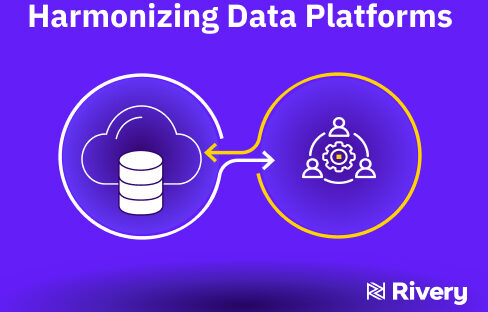Businesses in all sectors, particularly incumbents and enterprises, are racing to outrun the leaner, more efficient startups that threaten their market share. That’s why digital transformation currently accounts for 40% of all technology spending. Companies that want to win in the coming years must build digital infrastructure that not only thrives in the present, but also owns the future.
In our eBook – Digital Transformation: 6 Steps for Success at Data-Driven Companies – we lay out a step-by-step guide for executing a seamless digital transformation. In this entry, we outline the key technologies and business processes that companies often adopt during a digital transformation.
Technologies & Business Processes that Drive Successful Digital Transformations
Once a strong data foundation is in place for the digital transformation, an organization must implement new technologies and processes to achieve the project’s operational objectives. Each company will approach this task differently, but many will incorporate similar solutions, including:
- Big data & analytics – The world produces 2.5 quintillion bytes per day. And with new solutions such as cloud data warehouses and data management platforms, companies can finally derive key insights from this massive volume of data. For example, develop data models that generate granular, actionable analytics about customer behavior, intent, preferences, and more, to enhance buyer targeting and drive revenue.
- AI/machine learning – AI is often implemented to perform digitizable human labor, such as call center support or administrative tasks, along with more advanced functions such as generative design and engineering oversight. Companies deploy machine learning within business processes and systems to execute repeatable tasks with increasing precision, such as data preparation and data model construction.
- Automation – Automating business processes and practices is a primary goal of digital transformation. From welding a door to a new car, to transforming raw data, to scanning client IDs, automation unlocks new efficiencies for companies and customers alike. More and more, AI and machine learning are also entering automation workflows in the form of robotic process automation (RPA). RPA workflows employ software robots to execute basic tasks, so employees can focus on cerebral work. RPA can also create hybrid human/robot workflows.
- Mobile – Today, 53% of all online purchases are made with a mobile device. The customer experience is the mobile experience. All departments must focus on mobile usage, from prioritizing mobile app development, to incorporating the marketing team in app design, to optimizing websites for mobile. Mobile transformation is also becoming more essential for internal teams. Internal mobile channels enable employees to scan packages, upload documents, monitor KPIs, and much more, using their own smartphones.
- Cloud computing – 70% of IT budgets are spent on maintaining legacy systems. For companies with on-premise hardware or non-scalable servers, migrating to a cloud-based infrastructure is critical for a successful digital transformation. Cloud-based infrastructure can scale rapidly and nimbly, providing the flexibility to grow operations without technical and logistical hassles. Companies should aim to house all digital operations in the cloud.
- Internet of Things (IoT) – With the advent of small internet-connected sensors, devices as diverse as cargo trucks, factory equipment, and video game systems can now transmit data. When combined with a cloud data warehouse and data management platform, this data can be mixed and matched with customer data to access a new dimension of targeting and analysis. Companies can also run the data through a BI platform to visualize important analysis, such as customer behavior and product trends.
These are some of the key technologies and processes that can power a successful digital transformation. But, just as with DataOps, companies must also build these technologies and processes around an agile framework to meet evolving objectives. For this, companies should consider the agile transformation methodology.
Similar to DataOps, agile transformation pairs the methods of DevOps with digital transformation. Agile transformation is an iterative process built to meet the constantly changing digital needs of customers and teams. By combining DataOps and agile transformation in an integrated agile framework, companies can quickly and efficiently service all internal and external stakeholders.
Download the eBook Now!
Technologies and business processes are core components of digital transformations. But in order to implement a digital transformation that’s successful in the long run, companies must also tackle other challenges. If these new technologies and processes do not have a sturdy foundation, the digital transformation will soon buckle under its own weight.
But don’t worry – we’ve got you covered! Download Digital Transformation: 6 Steps for Success at Data-Driven Companies for a start-to-finish guide on how to handle every facet of your digital transformation.
Download Free eBook
Digital Transformation: 6 Steps for Success at Data-Driven CompaniesMinimize the firefighting. Maximize ROI on pipelines.





